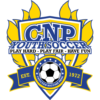Players
Youth Soccer Players: A Comprehensive Guide to Health, Training, and Safety
Welcome to Your Ultimate Soccer Resource! Whether you’re just kicking off your soccer journey or looking to improve your skills, this page will provide you with essential information and resources to stay healthy, train effectively, and stay safe on and off the field.
Health and Nutrition
Maintaining a healthy lifestyle is crucial for peak performance. Here are some key points:
- Balanced Diet: Ensure you’re eating a balanced diet rich in carbohydrates, proteins, fats, vitamins, and minerals.
- Breakfast: Start your day with a nutritious meal. Examples: whole grain cereal with milk and fruit, oatmeal with nuts, yogurt with honey and berries.
- Lunch: Opt for a balanced meal. Examples: grilled chicken sandwich with vegetables, quinoa salad with beans and avocado, turkey and cheese wrap with a side of fruit.
- Dinner: Choose meals with a mix of lean protein, whole grains, and vegetables. Examples: baked salmon with brown rice and steamed broccoli, spaghetti with meatballs and a side salad, tofu stir-fry with mixed vegetables and rice.
- Snacks: Healthy snacks can fuel your day. Examples: banana with peanut butter, hummus with baby carrots, apple slices with cheese.
- Hydration: Drink plenty of water before, during, and after playing. Dehydration can seriously affect your performance and health.
- Daily Hydration: Aim for at least 8 glasses of water a day. Drink more if you are in hot conditions or engaging in intense training.
- During Training: Drink water during breaks to stay hydrated. Avoid sugary drinks and stick to water or sports drinks for electrolytes if needed.
- Post-Match/Training: Hydrate with water or a sports drink to replenish lost fluids and electrolytes.
- Rest and Recovery: Proper rest is essential for recovery. Ensure you get enough sleep and allow time for your body to recover after intense sessions.
- Sleep: Aim for 8-10 hours of quality sleep each night to support physical and mental recovery.
- Rest Days: Schedule regular rest days in your training plan to allow your muscles to repair and grow stronger.
- Active Recovery: Engage in light activities like walking, stretching, or yoga on your rest days to promote blood flow and reduce muscle stiffness.
- Ice Baths and Muscle Soaks: Consider using cold baths or warm epsom salt baths post-training to help reduce inflammation and aid muscle recovery.
Training Tips
Effective training can make a significant difference in your performance. Here’s how to get the most out of your training:
- Warm-Up and Cool-Down: Always begin with a warm-up to prepare your muscles and prevent injuries. End with a cool-down to aid recovery.
- Regular Practice: Consistent practice routines help improve your skills. Focus on dribbling, passing, shooting, and defensive tactics.
- Strength and Conditioning: Incorporate strength training and conditioning exercises to build endurance, speed, and agility.
Injury Prevention and Management
Stay injury-free by following these guidelines:
- Proper Gear: Always wear the appropriate gear, including shin guards and well-fitting cleats.
- Know Your Limits: Listen to your body and avoid pushing yourself too hard, which can lead to injuries.
- First Aid: Learn basic first aid to handle minor injuries and know when to seek professional medical help.
- Strains and Sprains: If you experience a strain or sprain, follow the R.I.C.E. method:
- Rest: Avoid activities that cause pain, swelling, or discomfort.
- Ice: Apply ice to the injured area for 15-20 minutes every 2-3 hours. Use a thin towel between the ice and your skin2.
- Compression: Use an elastic bandage to compress the injured area and reduce swelling. Don’t wrap too tightly to avoid hindering circulation3.
- Elevation: Elevate the injured area above the level of your heart to help reduce swelling
- Learn more about the R.I.C.E. method on Sprains – Diagnosis and treatment – Mayo Clinic
Concussion Awareness
Concussions are serious injuries that require immediate attention. Here’s what you need to know:
- Symptoms: Look out for signs such as headache, dizziness, confusion, and nausea.
- Immediate Action: If you suspect a concussion, stop playing immediately and seek medical evaluation.
- Recovery: Follow your doctor’s advice thoroughly before resuming play to ensure full recovery.
- Learn more about concussion symptoms from Concussion – Symptoms and causes – Mayo Clinic.
Individual Training Ideas
Here are some training activities you can do on your own to stay in top form:
- Dribbling Drills: Set up cones and practice dribbling in tight spaces to improve control.
- Wall Passes: Find a wall to practice passing and receiving. This helps with your touch and accuracy.
- Shooting Practice: Use a goal or marked area to practice shooting from different angles and distances.
- Fitness Workouts: Combine soccer-specific fitness routines, such as sprints and agility drills, with general fitness exercises.
- Juggling: Practice juggling the ball with your feet to enhance your ball control and coordination.
- Footwork Drills: Use a ladder or mark lines on the ground to practice quick foot movements and improve your agility.
- Ball Control: Practice receiving and controlling the ball under pressure by using different parts of your body like your chest, thighs, and feet.
- Long Passes: Work on your long-passing techniques by aiming for specific targets over longer distances.
- Defensive Skills: Improve your one-on-one defending skills by practicing tackling, blocking, and positioning drills.
Useful Links:
By following these tips and practicing regularly, you’ll enhance your skills, stay healthy, and ensure a safe playing environment. Keep pushing your limits and enjoy the beautiful game! ⚽
